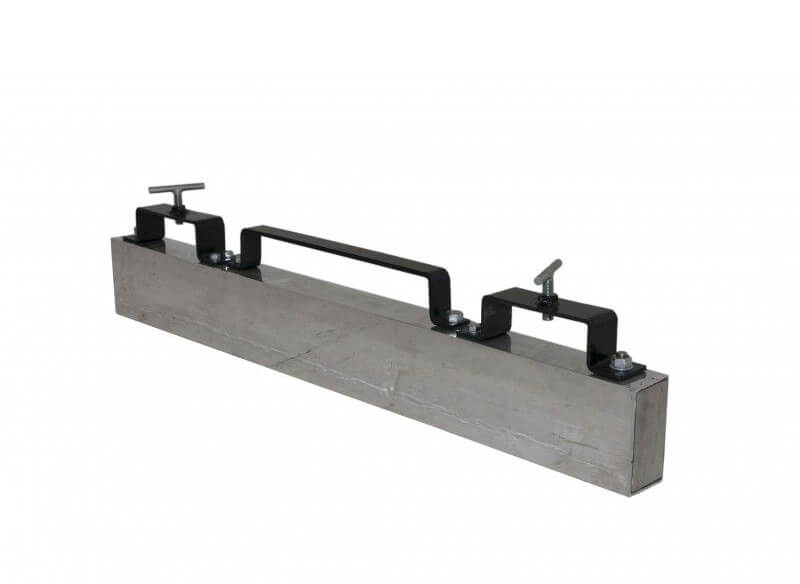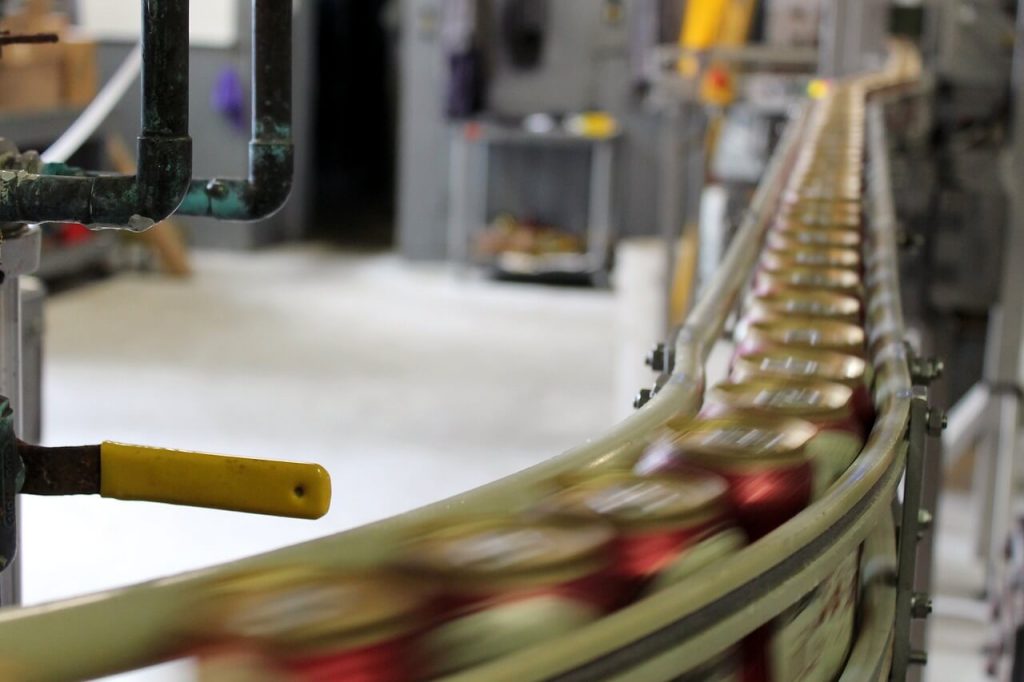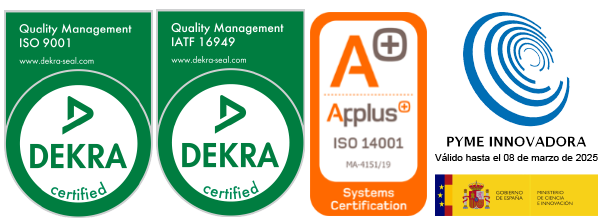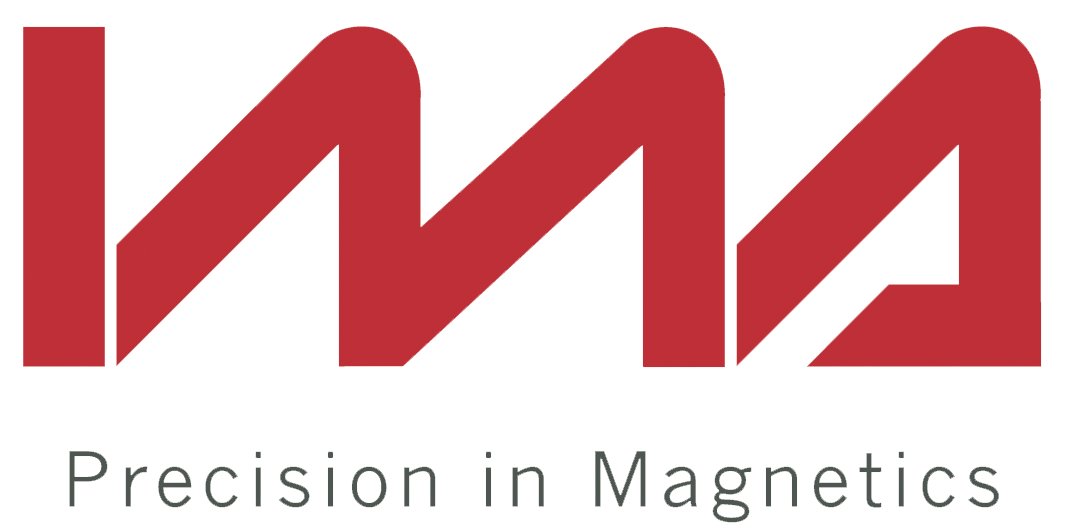The
construction industry demands magnets for formwork
Precast
concrete requires a magnetic formwork system to complete various forms.
Formwork magnets are most commonly used when changing various structural
concrete components to match customers' design.
Formwork
magnets, or permanent retention magnets, are suitable when you want to quickly
hold things in a certain position. For example, when it is necessary to temporarily
place metal profiles to use them as a form while pouring a concrete floor.
When we
say permanent, however, we are referring to its retention capacity. In fact,
they are very flexible in movement through their arrangements that allow you to
release the magnet once the piece you are working on is finished.
These
formwork magnets are designed to achieve the highest possible holding power. To
achieve this, good contact with the surface is necessary, as even a small air
space will reduce the holding force.
Formwork magnets, or fixing magnets, can be used to hold steel panels, beams, fences and templates in place. An arrangement on the permanent magnet allows the user to release the workpiece again. This flexible system saves time, money and labor.
The products of the magnetic formwork system generally include:
When can formwork magnets be used?
As
mentioned above, if you need to pour concrete or hold posts in place, simply
use formwork magnets with a layout that allows you to easily remove them once
done.
These
holding magnets offer so much holding power, you can be sure that everything
will stay in place during construction. In addition, no electricity or air is
required, making it an excellent alternative to other expensive methods used in
the industry.
Not only
does the use of formwork magnets in your construction projects provide superior
support and flexibility, but reusing the magnets can save time and money.
What formwork magnet solutions are available?
There is
currently a range of magnetic support systems for the production of precast
concrete elements. The magnets are available with formwork profile and
integrated magnets or as separate units, i.e. as magnetic supports, which can
be connected to a separate wooden or steel formwork on the casting table.
Magnetic
supports are also manufactured to hold the lifting and fixing anchors, as well
as various electrical boxes for steel formwork and for the formation of
chamfers and grooves for concrete elements. The formwork systems are delivered
to operate manually or with robot formwork.
The
magnetic formwork system with steel profile and integrated fastening system is
available for various different solutions, such as filigran, sandwich, facade,
columns and slab concrete elements.
The
formwork can be built for continuous production or for situations requiring
flexibility with frequently changing element sizes. The formwork system consists
of a steel profile and a built-in magnetic clamping mechanism that is suitable
for attachment to most bases.
Magnetic
brackets are used to attach the anchors to the formwork for threaded socket
anchors, spherical anchors, expansion anchors and other anchoring systems.
At IMA we have suitable formwork magnets that can solve fastening problems in the field of construction, prefabrication and carpentry. If you would like more information, you can contact us by filling in the following questionnaire and we will get back to you as soon as possible.
Get to
know all magnetic drums and their applications
Magnetic
drums are used to separate and concentrate magnetic materials by using a
stationary magnet, surrounded by a rotating shell, which imparts movement to
the materials in contact.
Magnetic
drums have a permanent separator which is very useful for separating iron
material from non-magnetic material processed in large quantities, for purity
of end products, recovery of commercially valuable metal and protection of
processing plant and machinery.
They are
widely used throughout the processing industry for the separation of iron
contamination from ores, chemicals, food, flour, plastics, grains, sand,
cement, fertilizers, abrasives, glass, slag, minerals, rock, refractories and
many other products.
Magnetic drums can also have double drum, which fulfills the same objective, but has double magnetism which allows the purity of the material to be much higher. In it, anisotropic and modern permanent magnets with greater coercitivity and eternal magnetic force are used. Machines are available with vibrating material inlet hopper and fully enclosed design to prevent dust formation and contamination.
Among the main features of magnetic drums are:
At IMA, we
have two types of magnetic drums:
Magnetic drums in INOX
They are the
most widely used for the protection of machines, mills and crushers, among
others, and are perfect for the separation of iron parts in a wide variety of
processes. This system is composed of two sections: One magnetic and one
non-magnetic, so that the material circulating above the magnetic sector can be
discharged.
The ferrous
particles remain in the drum and then fall when leaving the magnetic sector.
These drums are made of stainless steel (AISI 304 or AISI 316) composed of two
shafts: one mobile and the other fixed. The movable shaft rotates with the
drum, while the fixed shaft is used to position the magnetic field.
Magnetic drums as separators
The magnetic
drums in INOX are manufactured with:
Magnetic Drums with Diffuser Cabinet
The diffuser
cabinet makes the magnetic drum an ideal product for gravity falls from pipes
or environments where dust is a problem. The physiognomy of the structure means
that 100% of the product falls directly on the magnet, achieving unbeatable
results.
The two
differentiated outlets of product and ferrous material prevent any leakage or
mixture and end up providing the magnet with a complete and automatic magnetic
separation system.
Both
magnetic drums can work in humid and dusty environments and even at high
temperatures of up to 150°C. If this temperature were to be exceeded, it would
give rise to a loss of magnetic properties derived from heating, a phenomenon
in any case temporary, since when it cools it would recover its initial
properties again.
If you would like more information about magnetic drums, please do not hesitate to contact us.
What are pressed magnets ?
Pressed magnets are the result of the bonding between thermoplastic binders and permanent magnet powders, i.e. ferrite, neodymium and/or samarium cobalt, and can be divided into isotropic magnets and anisotropic full density magnets.
The
manufacturing process of this type of magnet is significantly different from
the traditional sintering and gluing. Hot pressed magnets have fine glass
grains after a series of unique manufacturing processes.
The magnetic
properties of hot pressed magnets are much higher than those present in
traditionally bonded magnets, even because it makes the neodymium sintered.
This type of
magnets have an excellent resistance to heat, managing to withstand up to about
180deg C during operation. Hot pressing and deformation technology requires no
orientation mechanism during the molding process. The flexibility and
declination of its poles depends entirely on the magnetization process.
What are the advantages of pressed magnets?
They have
excellent mechanical properties that allow tight tolerances to be reached,
facilitating their equilibrium and assembly. The waveforms of pressed magnets
are determined by the magnetization process and their nanocrystalline structure
and higher density is able to ensure that they have greater corrosion
resistance.
Also,
pressed magnets have certain disadvantages in relation to other types of
magnets, because:
Despite the magnetic properties of this type of magnet, which are close to the properties of sintered neodymium magnets, its value is even higher than that of this type of magnet. In fact, nowadays, the price of pressed magnets is an important element at the time of their manufacture.
What are the applications of hot pressed
magnets?
Hot pressed
magnets can help the smooth running engine, but they are punctually used in:
Pressed
magnets have demonstrated the heat resistance described above in the hybrid
cars of a major Japanese assembler, demonstrating that high coercitivity
magnetic properties have been the best option for reducing the use of heavy
rare earth elements.
Prepared
samples of pressed magnets, to date, exhibit intrinsic coercivities of
approximately 1200 kA / m, a remanence of around 690 mT and maximum BH values
of approximately 90 kJ / m 3 . Careful studies of microstructures reveal that
the magnets consist of Nd 2 Fe 14 B predominantly in the range of 0.1 μm⩽ x ⩽1.0 μm with a very small number of grains
in the range of 10 μm ⩽ x ⩽35 μm.
These larger
grains exhibit very regular morphology and are the result of very rapid growth
of some of the smaller micrometric grains. B 8 ensures that the magnets have
12% neodymium-rich intergranular material and this low melting point phase has
been found to aid the densification process.
This
neodymium-rich material is very unevenly distributed throughout the hot pressed
magnet and little evidence of its presence can be found among the grains of Nd
2 Fe 14 B.
This material enables the creation of more complex geometries. IMA currently manufactures this product for numerous customers such as motor manufacturers, magnetic encoders for household appliances, washers and motors, automotive, among others, so if you are interested in knowing more about the power of pressed magnets, do not hesitate to contact us.
Magnetic sweepers for forklifts and their operation
The magnetic sweepers in forklifts are especially used in spaces such as airports, a large parking lot, or any business in which unwanted metals may appear, because they facilitate the work of cleaning debris from the floor, especially if they are sharpened as nails or scrap metal.
This type of
debris can cause flat tires or, worse, could endanger the health and physical
integrity of employees, customers or visitors.
A magnetic
sweeper made of forklift magnets has been specifically created to ensure
greater safety and eliminate any type of risk in any industrial sector.
What are the types of magnetic sweepers?
There are
two types of magnetic sweepers:
In both
cases, they are ideal for keeping parking lots, container depots and warehouses
free of nails, shavings, nuts and bolts, etc. Once the cleaning operation is
complete, the forklift magnets can be removed for use at a later date.
Simple collection and release protocols allow metal fragments to be quickly collected and stored, cleaned and removed from where they can do harm.
Among the
most important features of sweepers with magnets for forklifts stand out:
The sweeper or broom with forklift magnets, can be made of stainless steel, so it has a higher resistance, is more comfortable to demagnetize and facilitates the method of attachment to a forklift. At IMA we have the right magnets for forklift magnet sweepers, so if you require a forklift magnet solution for your business, you can contact us by filling out the following questionnaire and we will get back to you as soon as possible.
Applications of neodymium magnets in electrical appliances
The applications of neodymium magnets in electrical appliances are very specific, as they are for electric motors. Neodymium magnets are made of a combination of iron, boron and neodymium, so their resistance and the diversity of ways in which they can be produced, make their use in everyday life so common, that we can find them in almost any area of our day to day life.
As far as electrical appliances are concerned, neodymium magnets are basically used in audio equipment such as speakers, headphones and microphones. For example, the speakers are controlled by two magnets and an electric current. A mobile electromagnetic coil is suspended near a fixed magnet, and an electric current is pushed through the coil very quickly.
As the coil is charged, it is attracted by the magnet and repelled again, causing vibrations that amplify and become music to your ears. The microphones, of course, work under a similar principle, because when the coil moves through the magnetic field generated by the neodymium magnets, an electrical signal is generated, which reproduces itself as sound.
They can also be components of toys
The smallest neodymium magnets can be found in electric toys that, of course, are entertainment for children and adults. In fact, many of the toys you have at home may have neodymium magnets inside, which is why there must be constant supervision of an adult when handling electric toys, since small neodymium magnets may present a risk of suffocation, so it is very important to know a little about the maintenance, handling and care of neodymium magnets.
Likewise, neodymium magnets can also be found in often small GPS units that are installed in vehicles or equipment that need to be tracked.
In addition, neodymium magnets also have uses in an engine, as well as in other areas of daily life they are found, for example, in:
But, mostly, neodymium magnets, in addition to the previous examples, are very often utilized in:
Door locks. Doors in public or commercial spaces are often used as fire doors. Therefore, they should always be tightly closed. Strong magnets take over this task, even children can open a public fire door.
Engines and generators. Electric motors use a combination of electromagnets and permanent magnets to convert electrical energy into mechanical energy. A generator, on the other hand, converts mechanical energy into electrical energy by moving a conductor through a magnetic field.
Finally, in the industrial sector, neodymium magnets have very wide uses in automation, specifically in robotics and motion sensors.
In short, the applications of neodymium magnets, both in electronics and in other areas, are very common. Even their domestic use is also widespread, as much as in the elaboration of technological components, engines for escalators, wind generators, magnetic resonance equipment or the aerospace industry. In all these fields, and many others, we can find neodymium magnets nowadays.
What magnets are used in packaging systems?
Magnets play
an important role in packaging systems, ensuring reliable product delivery and
complying with rigorous quality control processes that are constantly evolving.
In fact,
magnets in packaging systems are part of unique solutions that enable both the
customer and the end user to receive reliable products. Packaging manufacturers
and designers, as well as marketing agencies, have unanimously adopted magnets
as their first choice when packaging products.
Magnets, in
packaging systems, are mainly used in package closures. That is to say, to
assure the packing or packed, magnets are placed that allow a closing the box
that assures that the product will be inside it.
What type of magnets are used in
packaging systems?
Packaging
magnetic closures are made with neodymium magnets, one of the most powerful
rare earth magnets, which add a high level of quality feel, while providing a
solution that is easy to integrate, open and close, reliable and predictable,
with wear-free performance.
Neodymium
magnets are strong and compact magnetic materials, available with and without
adhesive backing. Neodymium magnets used in packaging systems are nickel coated
to protect against corrosion and provide maximum operating temperatures of
176ºF for standard magnets. Higher temperature resistance is possible with this
type of magnet.
These
neodymium magnets are usually magnetized conventionally through the thickness.
Achieving perfect alignment in magnetism applications requires facing opposite
poles.
In what type of packaging can
magnets be used?
Magnets in
packaging systems are commonly used in packaging projects:
The
incorporation of magnets in packaging systems allows cost savings, precisely in
the assembly of tools during the integration with the package. Whether clearly
visible or completely hidden from view, magnets offer almost unlimited
potential for creating a durable, reusable high-end package that carries the
company's brand far beyond the initial purchase of the product.
The use of
magnets in packaging systems is increasing. There are many advantages and they
are being exploited by creative designers and manufacturing companies.
Where can we find magnets in
packaging?
It is very
probable that, in a television package, that contains inside a remote control
or, in another case, some product that integrates the software in a CD or
others with cables contains inside the packing system a neodymium magnet.
In this
case, for example, the box may contain small magnets that are integrated into
the cover, while other steel lenses are incorporated into the latch to ensure
that the reusable package opens and closes.
A good
packaging design provides an airtightness that is key to the final quality of
the product. This closure is transparent, secure and capable of unlimited
action without significant change in performance. At IMA we manufacture magnets
that simplify and optimize the design and implementation of a package closure.
According to physical specifications and aesthetic design requirements, magnets
aim to optimize package performance effectively. If you would like more
information, please do not hesitate to contact us.
Permanent magnets provide greater efficiency in wind energy
Permanent magnet generators improve the
financial performance of wind power projects and are the answer for turbine
manufacturers, who are looking for a powertrain that offers high efficiencies
with partial load, greater availability and a simplified grid connection that
protects the generator from any type of disturbance.
These permanent magnet generators, too, can be applicable to direct drive, medium speed and high speed systems.
A common view is that permanent magnet
generators are applicable only to direct drive offshore wind turbines, where
their use eliminates the potentially problematic gearbox. However, permanent
magnet generators offer so many compelling advantages that they are now being
designed as gearbox transmissions to operate at a wide range of output speeds.
Permanent
magnet generators replace double feed induction
Dual-powered induction generators have
provided the wind power industry with many years of excellent service. However,
the number of undeveloped Class I wind sites decreases with each passing year,
while project developers demand improvements in plant reliability and
availability.
In this regard, permanent magnet generators
offer a wide range of performance advantages to wind farm developers and
operators that can make a significant and positive difference to project
economics.
For example, permanent magnet generators are
incredibly flexible. Your design can be customized for:
The
permanent magnet generator designer can exchange the properties and weights of
magnet, stator copper and stator lamination to achieve the required objectives
without the need for the turbine OEM to accept a standard, market-optimal,
non-optimal generator.
Permanent
magnet and rare earth generators
The magnets in the rotor of a permanent magnet generator use rare earth metals. The magnets used in these generators generally contain ~ 30% Nd (neodymium) in weight, and most of the remaining weight is made up of low-cost ferrous materials.
Permanent magnet generators are flexible.
They allow wind turbine designers to consider powertrains with a wide range of
topologies, from conventional modular gearboxes and generator arrays to fully
integrated systems (or hybrids) assembled within a single cabinet, and even
direct drive systems that operate without a gearbox. Every topology has merits.
In addition, a conventional high-speed drive
train with fully independent or modular gearbox and a permanent magnet
generator appears in the layout of the modular drive train.
This gives the turbine OEM the maximum
flexibility to select the suppliers of the gearbox and generator, as both are
completely independent.
Finally, by integrating some components of
the powertrain, the overall length and weight can be significantly reduced.
This is achieved by combining the main bearing and gearbox for a medium or high
speed shaft design, or by close coupling of the gearbox and generator as shown
in the integrated powertrain layout.
All these features of permanent magnet generators make it possible to reduce costs in wind energy. If you want to know more about this technology, at IMA we can advise you on the magnetism solution that best suits your project. If you have questions, you can contact us.












